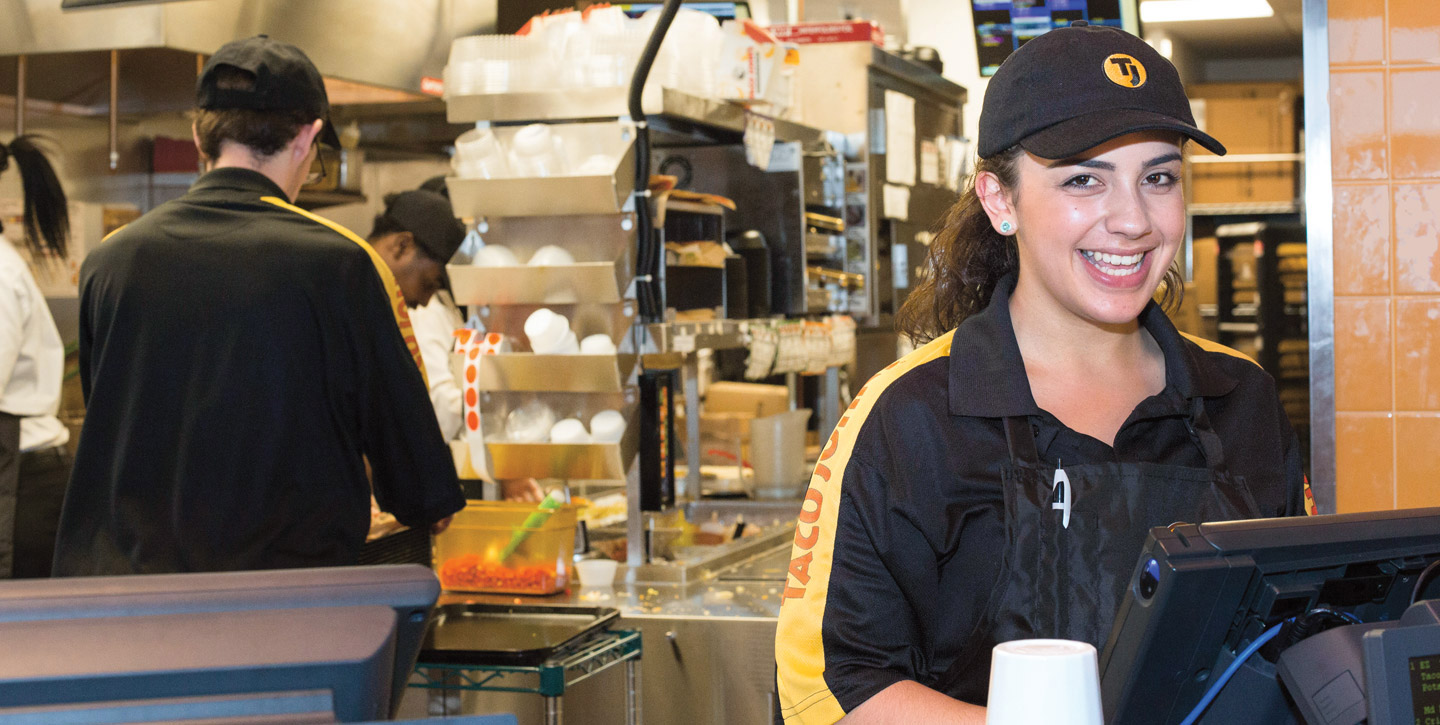For 17-year-old Hallea Afourguit, school sometimes feels like a full-time job. The senior at Burke High School in Omaha, Nebraska, is trying to balance taking A.P. government and literature courses, studying for the A.C.T. exam, and completing her college applications. All of this leaves her with little time for an actual job.
“My parents have been telling me, ‘You do not need a job right now. Your only focus should be on school,’” Hallea says.
That’s a far cry from the mind-set many people had when Hallea’s parents were teenagers. Back then, jobs like flipping burgers, lifeguarding at the pool, and scooping ice cream were practically a rite of passage. And even teens who didn’t work during the school year typically still held summer jobs.
But today, teens are waiting until later in life to bring home their first paycheck. In 2000, more than 50 percent of teens, age 16 to 19, had a job—now it’s about 35 percent (see graph, below). And, the proportion of teens who work during the summer has also fallen dramatically—from nearly 72 percent in 1978 to about 43 percent in 2016.
school sometimes feels like a full-time job. The senior at Burke High School in Omaha, Nebraska, takes A.P. government and literature courses. She tries to balance that with studying for the A.C.T. exam and completing her college applications. All of this leaves her with little time for an actual job.
“My parents have been telling me, ‘You do not need a job right now. Your only focus should be on school,’” Hallea says.
That’s a far cry from the mindset many people had when Hallea’s parents were teenagers. Back then, jobs like flipping burgers, lifeguarding at the pool, and scooping ice cream were practically a rite of passage. And even teens who didn’t work during the school year typically still held summer jobs.
But today, teens are waiting until later in life to bring home their first paycheck. In 2000, more than 50 percent of teens, ages 16 to 19, had a job. Today, about 35 percent do (see graph, below). And, the proportion of teens who work during the summer has also fallen dramatically—from nearly 72 percent in 1978 to about 43 percent in 2016.

